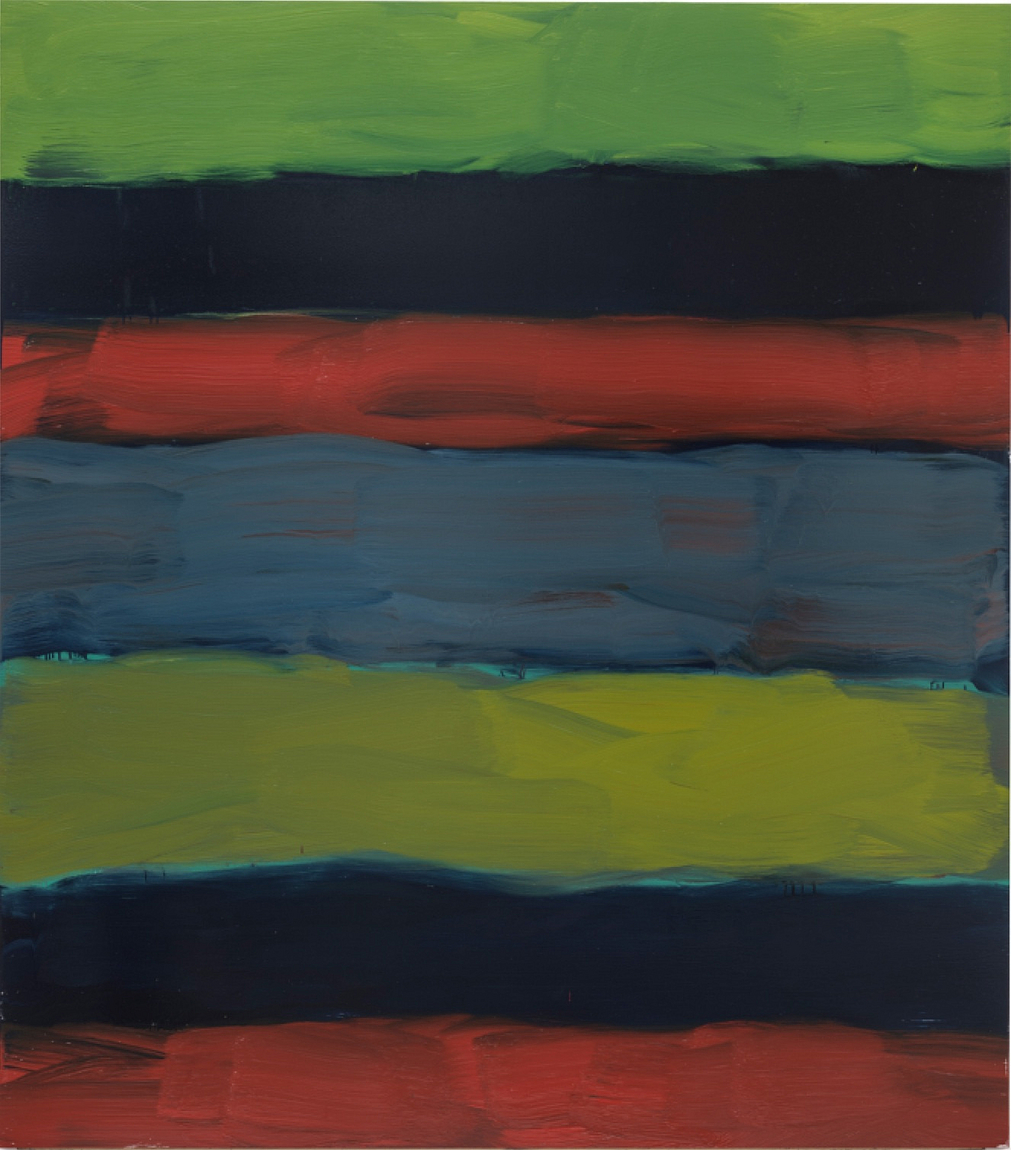Sean Scully
Dublin Ierland , lives and works in New York
Landline River
2017
oil on aluminum
215.9 x 190.5 cm
2018.SS.01
In the series Landlines Sean Scully explores the dividing lines between land, water and sky. The paintings are made up of broad horizontal strokes in subdued earthen hues, alternated with green and blue. The paint has been applied fluidly, which prevents the bands of color from becoming monochrome or distinctly separate from each other. Many of the works have been painted on aluminum, a relatively new development in Scully’s oeuvre. As the artist puts it, this material offers ‘resistance’ when painted on. The painted strips are based not only on color, texture and form, but also on weight and density. This is how the material qualities of sky, water and land are made visible.
Landlines are abstract compositions, but at the same time they are clearly reminiscent of landscapes, of nature. Scully’s work is generous; it offers the viewer room for personal memories or dreams. Or, as another influential abstract painter, Brice Marden once aptly described this: ‘The rectangle, the plane, the structure, the picture are but sounding boards for a spirit.’
Like Marsden, Scully always gives his paintings a title. Untitled is actually never used in their work, and as such they clearly distinguish themselves from Minimal Art. ‘What you see is what you see’ is a frequently quoted statement, from 1966, by one of the main representatives of this art movement, Frank Stella. ‘My painting is based,’ he explains, ‘on the fact that only what can be seen there is there. It really is an object.’Scully, by contrast, regards the painting as a metaphor. For freedom, for instance: ‘I make things for people to look at that are not closed down, not concluded, things that are made emphatically with the wish to stay open.’ When you look at a mountain, he writes, it doesn’t mean anything in itself. ‘It is not a question of what it means, it is a question of what that mountain does to us. And the more romantic we are by nature, the bigger and deeper its effect (...) With paintings, we look for meaning. But we could also look for meaninglessness. To find meaninglessness and meaning, impotence and profundity all at the same time would present a freedom that is inhabited.’

